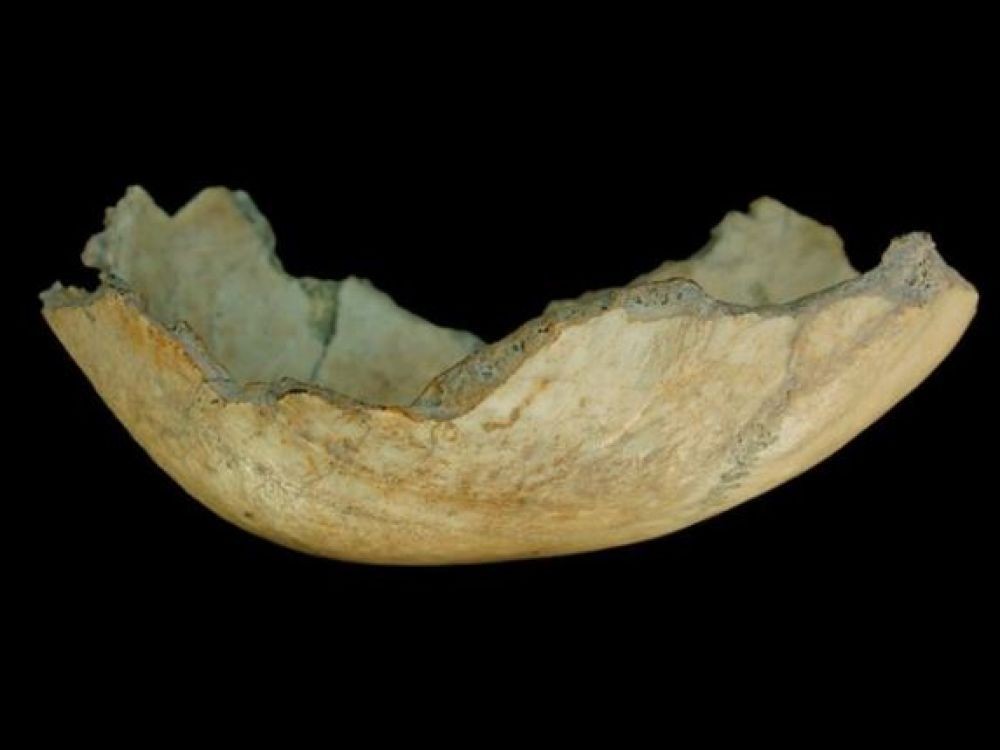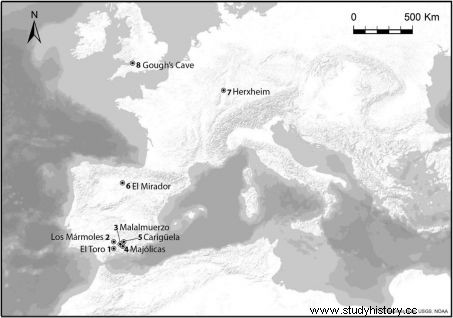Traces of teeth and scraping, cooking marks...:human bones exhumed in the cave of El Toro, in Spain, prove that cannibalism was practiced by the first European farmers, 5000 years before our era.

Human skullcap transformed into a container (cut).
Chewed bones, a peeled, polished and boiled skullcap… These are some of the gruesome signs of cannibalistic behavior* recently found in El Toro Cave, El Torcal de Antequera, near Malaga in southern Spain . They are thought to be the work of early Neolithic agricultural populations, who arrived in Europe around 7000 years ago, those who succeeded the nomadic groups of hunter-gatherers. " Some of these bones retain cut marks or percussion marks resulting from the extraction of the marrow. There are even teeth and chewing marks. This testifies to the extent of the practice of cannibalism among prehistoric peoples of the southern Iberian Peninsula more than 6000 years ago ", explains Jonathan Santana, from the University of Durham (United Kingdom), co-author of an article published in February 2019 in the journal American Journal of Physical Anthropology . According to the archaeologist, the human remains analyzed belong to two distinct assemblages:On one side, a "skull cup" (vessel) and an adult mandible associated with four pottery; on the other, bones mixed with domestic waste.
This is not the first time that such observations have been made in Europe. In the past, similar "skull sections" had been found in Cough (United Kingdom) and in the cave of Placard in Charente (France), as well as in Maszycka (Poland) or in the Rhine Valley (Germany). ). These remains are attributed to Magdalenian groups (from 15,000 to 10,000 years before our era).

Situation map of European prehistoric sites where skull sections and evidence of cannibalism have been unearthed. Credits:Jonathan Santana / American Journal of Physical Anthropology
Neolithic farmers would therefore have perpetuated an already very ancient tradition. Thus, in Herxheim (Germany), similar traces of butchery had been observed in 2003 on skulls and shins by Bruno Boulestin, of the Laboratory for the Anthropology of Past Populations (Bordeaux University), attesting to these little-studied practices over a large number of individuals. From east to west and from north to south of Europe, there is therefore no longer any doubt that cannibalism was a much less exceptional activity than one could imagine. Among the hunter-gatherers as among the farmer-herders who succeeded them. Was it aggressive cannibalism, linked to violent conflicts between human groups, or a practice linked to funerary rites? In the Andalusian case of the Cueva del Toro, it could be the consumption of members of the same family, if we are to believe the results of the first DNA analyzes. Specialists are continuing their investigations.
Cannibalism consists of consuming an individual of its own species. The phrase applies both to animals that devour members of their species (like praying mantises) and to humans that consume human flesh. In humans, we distinguish endocannibalism , consisting of consuming members of one’s own group, and exocannibalism , oriented towards individuals from other groups.
Anthropophagy designates a form of cannibalism that concerns only the human species.
